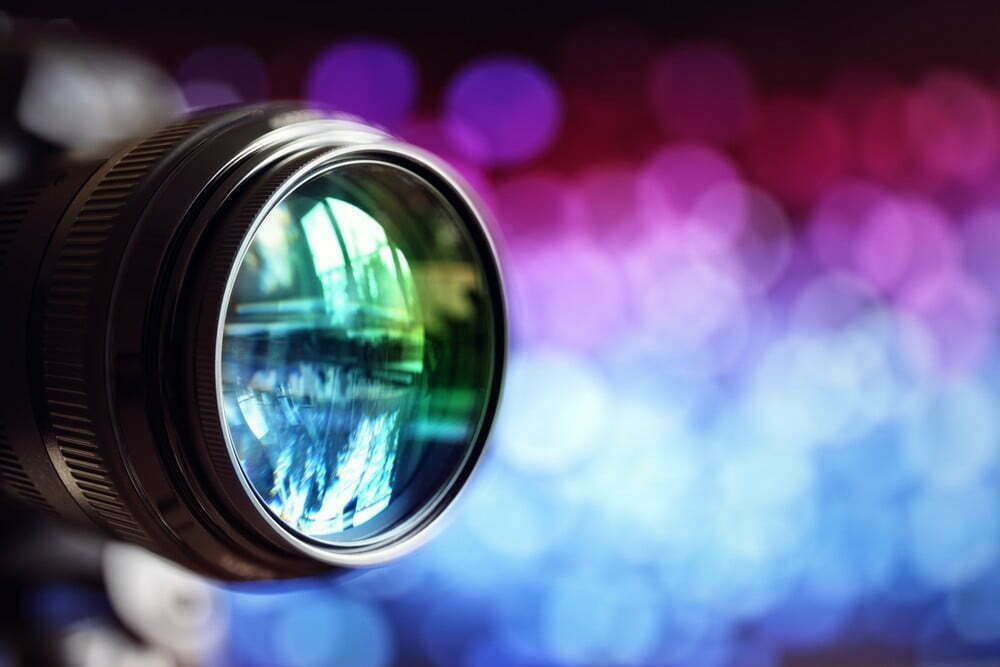If you’ve ever wondered “how is a digital camera made,” you’ve come to the right place. We’ll take you through a general overview of the careful process used by companies like Canon, Sony, and others. These master artisans combine decades of experience with leading-edge technology to produce camera parts that work in precise synchronization for digital photography.
KEY TAKEAWAYS:
- The manufacturing process for a digital camera is lengthy, involving several steps.
- It begins with lens simulations before proceeding to image sensor and processor assembly before the body is built.
- Before a camera model is released for sale to the public, hundreds of prototypes undergo rigorous testing.
Of course, amateur photographers planning to purchase the best digital camera might also want to take a moment to learn about its other the functionalities such as how does shutter work on digital camera or how long does a digital camera battery last.
The Manufacturing Process
Lens Production
The design team begins by conducting thousands of simulations on the arrangement and order of the camera lens components. Next, using 3D computer-aided design, the engineers design how the entire lens will look and operate.
The assembling of the lens begins with polishing each glass piece. Polishing and washing the lens is done thousands of times. Finally, after careful inspection, the lenses are coated to protect them from scratching. The optical viewfinder lens undergoes the same process.
Image Sensor Production
Engineers place micrometer order circuits on disc-like silicon wafers, which host several digital image sensors, like CMOS and CCD sensors. Then, through an automated process, wire and electrical circuits are bonded on the chip to complete the assembly of the sensor unit. At the end of the production cycle, each sensor is inspected to ensure it meets a very strict standard of quality.
Image Processor Production
The production team incorporates different circuit boards onto the motherboard of the image processor. Then, tests are performed on the camera features, e.g., facial recognition, to ensure that the features included in the image processor work.
Camera Body Production
The camera body design is first sketched by hand. Next, the team creates a digital 3D model to work out all the details. During the design process, factors considered include the colors, ergonomics, and even ease of use. Once all the details are fleshed out, the digital development team receives the data. Then, it adds details about other camera parts, like the image sensor and the viewfinder.
Testing
Before commercial production of consumer cameras, hundreds of proto-type cameras undergo repeated testing, such as drop testing. Moreover, robots press the camera buttons (e.g., the shutter release button) thousands of times until the production team is satisfied with the results.
Warning
Avoid over-cleaning or touching the sensor because you may cause irreparable damage.
F.A.Q.S
When and how was the first photograph taken?
French inventor Joseph Nicéphore Niépce is credited with taking the first photo in 1827 in Burgundy, France. He used a camera obscura to capture the view outside his window by focusing it on a pewter plate. The entire process took him approximately eight hours.
What did the first camera look like?
The first photographic camera was known as camera obscura (Latin name for “dark room”). In 5th century China, Mozi, a Han Chinese philosopher, observed a natural optical phenomenon where light from a scene passed through a small hole and then projected an inverted image of the scene to a screen. Later on, portable box camera obscurae were developed.
What was the name of the first digital camera?
The first digital camera prototype ever made didn’t have a name, but it was invented by Steve Sasson, an Eastman Kodak Company employee, in 1975 using old camera parts. In 1981, Sony released an analog electronic camera called the Mavica, but digital cameras were prohibitively expensive until Apple released the QuickTake 100 in 1994.
STAT: In 2016, there was a drop in camera production of up to 81% compared to 2010. (source)
REFERENCES:



































![Best Point and Shoot Camera in [year] ([month] Reviews) 27 Best Point and Shoot Camera in 2025 (December Reviews)](https://www.gadgetreview.dev/wp-content/uploads/Nikon-Coolpix-B500.jpg)
![Best Underwater Camera in [year] ([month] Reviews) 28 Best Underwater Camera in 2025 (December Reviews)](https://www.gadgetreview.dev/wp-content/uploads/best-underwater-camera-image.jpg)
![Best Digital Cameras in [year] ([month] Reviews) 29 Best Digital Cameras in 2025 (December Reviews)](https://www.gadgetreview.dev/wp-content/uploads/what-is-resolution-on-digital-camera-1.jpg)
![Best Digital Camera Docking Stations in [year] 30 Best Digital Camera Docking Stations in 2025](https://www.gadgetreview.dev/wp-content/uploads/best-digital-camera-docking-stations-image.jpg)
![Best Vlogging Camera in [year] ([month] Reviews) 31 Best Vlogging Camera in 2025 (December Reviews)](https://www.gadgetreview.dev/wp-content/uploads/best-vlogging-camera-image.jpg)
![Best Mirrorless Camera in [year] ([month] Reviews) 32 Best Mirrorless Camera in 2025 (December Reviews)](https://www.gadgetreview.dev/wp-content/uploads/best-mirrorless-camera-image.jpg)
![Best GoPro in [year] ([month] Reviews) 33 Best GoPro in 2025 (December Reviews)](https://www.gadgetreview.dev/wp-content/uploads/best-gopro-image.jpg)
![Best Digital Camera Tripods in [year] 34 Best Digital Camera Tripods in 2025](https://www.gadgetreview.dev/wp-content/uploads/best-digital-camera-tripods-image.jpg)
![Best Canon Digital Cameras in [year] 35 Best Canon Digital Cameras in 2025](https://www.gadgetreview.dev/wp-content/uploads/best-canon-digital-cameras-image.jpg)
![Best Polaroid Digital Cameras in [year] 36 Best Polaroid Digital Cameras in 2025](https://www.gadgetreview.dev/wp-content/uploads/best-polaroid-digital-cameras-image.jpg)
![Best Small Digital Camera Cases in [year] 37 Best Small Digital Camera Cases in 2025](https://www.gadgetreview.dev/wp-content/uploads/best-small-digital-camera-case-image.jpg)
![Best Digital Camera USB Cables in [year] 38 Best Digital Camera USB Cables in 2025](https://www.gadgetreview.dev/wp-content/uploads/best-digital-camera-usb-cable-image.jpg)
![Best Digital Camera Bags in [year] 39 Best Digital Camera Bags in 2025](https://www.gadgetreview.dev/wp-content/uploads/best-digital-camera-bag-image.jpg)
![Best Sony Digital Cameras in [year] 40 Best Sony Digital Cameras in 2025](https://www.gadgetreview.dev/wp-content/uploads/best-sony-digital-cameras-image.jpg)
![Best Panasonic Digital Cameras in [year] 41 Best Panasonic Digital Cameras in 2025](https://www.gadgetreview.dev/wp-content/uploads/best-panasonic-digital-cameras-image.jpg)
![Best Digital Camera Accessories in [year] 42 Best Digital Camera Accessories in 2025](https://www.gadgetreview.dev/wp-content/uploads/best-digital-camera-accessories-image.jpg)
![Best Kodak Digital Cameras in [year] 43 Best Kodak Digital Cameras in 2025](https://www.gadgetreview.dev/wp-content/uploads/best-kodak-digital-cameras-images.jpg)
![Best Video Cameras in [year] ([month] Reviews) 44 Best Video Cameras in 2025 (December Reviews)](https://www.gadgetreview.dev/wp-content/uploads/best-video-cameras-image.jpg)
![Best Compact Cameras in [year] 45 Best Compact Cameras in 2025](https://www.gadgetreview.dev/wp-content/uploads/best-compact-camera-image.jpg)
![Best Digital Cameras with Wifi in [year] 46 Best Digital Cameras with Wifi in 2025](https://www.gadgetreview.dev/wp-content/uploads/best-digital-camera-with-wifi-image.jpg)



















